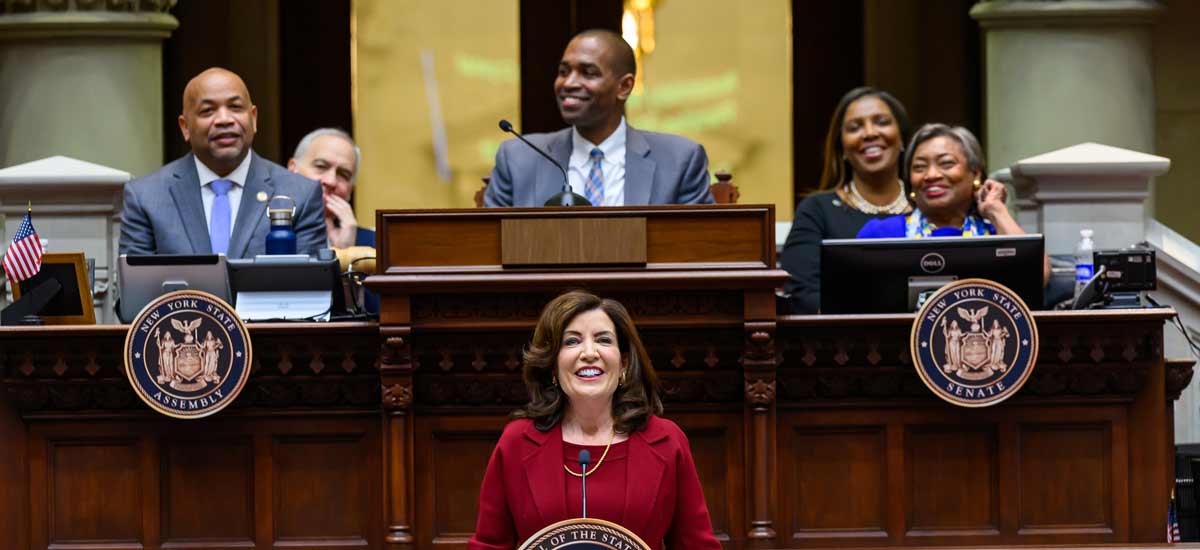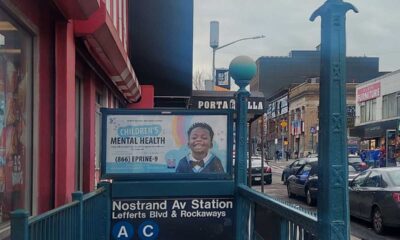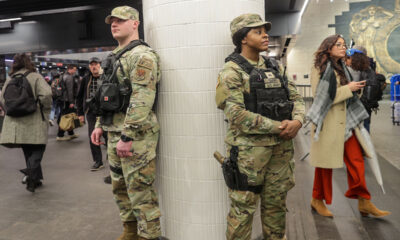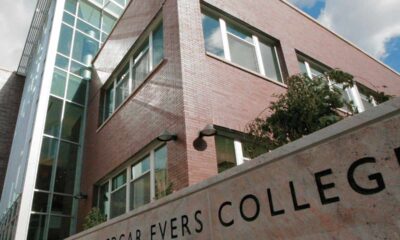Education
Governor Hochul Pushes ‘Back to Basics’ to Improve Young People’s Reading Proficiency

Last week, Governor Kathy Hochul unveiled her Back to Basics plan to improve reading proficiency in New York as a part of her 2024 State of the State mission.
To transition New York to reading instruction that teaches students the foundational skills they need to become proficient readers, Governor Hochul is introducing legislation that ensures evidence-based best practices are used throughout New York. She is proposing $10 million in state investments to train 20,000 teachers in Science of Reading instructional best practices and announced an expansion of SUNY and CUNY’s micro credentialing programs for teachers focused on the Science of Reading, to ensure our current and future teachers seeking advanced education are best prepared.
“We’re going to turn the page on how we teach young people to read,” she said at a press conference in Watervliet, NY.
“This is a long overdue opportunity to help young people have the best opportunities they can. We’re going to be reforming how we teach reading and bringing our State’s curriculum in line with the nation’s accepted best practices.
“Now, this builds on a lot of work we’ve done before. We believe in our teachers. We love our teachers. We invested in the Master Teacher Program, investing over $5.3 billion in our education program. It’s a huge increase, but there’s still a problem called illiteracy. There’s still too many people who don’t know how to read. And that’s a real problem, isn’t it? That’s a real problem. If you don’t know how to read, how do you get along in life if you really can’t read and understand things?
“ Young people need to have a better chance, it’s hard to find a good paying job someday. But if you can read, so many doors open for you, right? You can go to college, you can go get skills, you can go work any place you want to work. But too many young people aren’t succeeding.
“And here’s the reason. Our teachers are great, they work hard. Our schools are great, we give them a lot of money to make sure that they have what they need. But also, what are they teaching? What is the curriculum? And not just math, we’re talking about reading today. And so, there was a problem because people were being taught a certain way for a long time. When I was younger, we used to learn about phonics. There’s a basic way. It’s called back to basics. How you learn to read. And what happened was, they decided to change it.
“There was this idea about 20 years ago. They thought, ‘Hey, there’s a whole different way of learning. Why don’t we just put kids in a room with books? And they’ll figure it out.’ You think that’s very smart? It’s what they’re talking about when they deemphasize phonics-based learning and they push students to learn by using contextual clues instead.
“Teaching programs in colleges have focused on that program as well. So, the teachers were taught, this is how you’re supposed to do it, and they did. They were told, this is what works. And they carried out the duties they’re supposed to do. But despite the best efforts, it’s showing that it’s not working anymore. It’s not working. So, study after study has emerged over the last few years, showing it’s not getting the job done. This outdated curriculum is still, even though we know it’s not good, it is still the most common way they’re teaching reading and literacy in our schools. It’s the most widely used. It’s called the Lucy Calkins Balanced Reading Approach, and many experts have said it doesn’t work, they’ve discredited it.
“So, we’re going to take an important step. One was that we signed a new law to improve how reading is taught to students with dyslexia, and I want to give a special shout out to Assemblymember Bobby Carroll and Senator Brad Hoylman, who have sponsored this bill.
“But we have more work to do. Our job is not done. Third grade is a critical point. By third grade, if you’re not reading good, it’s hard to read better later. It’s bad if young people don’t learn how to read at that age, and there’s something that we need to be doing, and that’s teaching with phonics.
“Direct instruction, guidance: it’s not just science, it’s common sense. It’s like if you’re– anybody here play music instruments? Do you play musical instruments? Yeah? Well, if you’re taking piano lessons, for example, you have to learn the basics first. You don’t just go listen to some beautiful concert music from Beethoven and say, “Oh, I can go do that.” You have to learn the fundamentals. You have to learn the basics. No one questions that.
“But we’re going to make sure that our kids learn the basics. Other states are doing this – Connecticut’s doing it, New Jersey’s doing it, even the City of New York’s doing it. And as Governor of the entire State of New York, I think every child should have the best shot at life, the best shot to learn how to read, best shot to become completely literate by the time they leave school and make sure that our families deserve better as well.
“That’s what we’re going to do. The first day of school is like a fresh start. We’re going to have a fresh start. We’re going to do things differently, and we really expect different outcomes.
“It’s a set of solutions to, to design, to reset how our schools approach reading. We’re setting a bold goal to transform how reading is taught in the State of New York. And we’ll make sure that students receive what they learn. So, we’re going to be teaching phonics, decoding, vocabulary and comprehension.
“We’re going to get back to common sense basics (and) to help our teachers we’re going to be investing $10 million in teacher training programs to make sure we can fund over 20,000 more teachers to learn how to do this.
“It doesn’t sound like a big deal maybe to you sitting in the front row, but it is. It is, okay? This is a very big deal because for a long time, people realized what was going on was not working, but nobody stood up and said it needs to change. And sometimes it takes a little bit of will and ambition and a bold idea for what our State can be.
“We will do better and I’m going to set high goals for us to make sure that we achieve highest because this is New York, my friends. This is New York State. This is the greatest State in the nation, and I’m looking at a room full of young people that represent young people all over New York.
“We’re going to throw away the old method, say ‘goodbye, it didn’t work,’ and get back to basics and learning and make sure that you have a great chance to learn the easiest and best way you can.”













